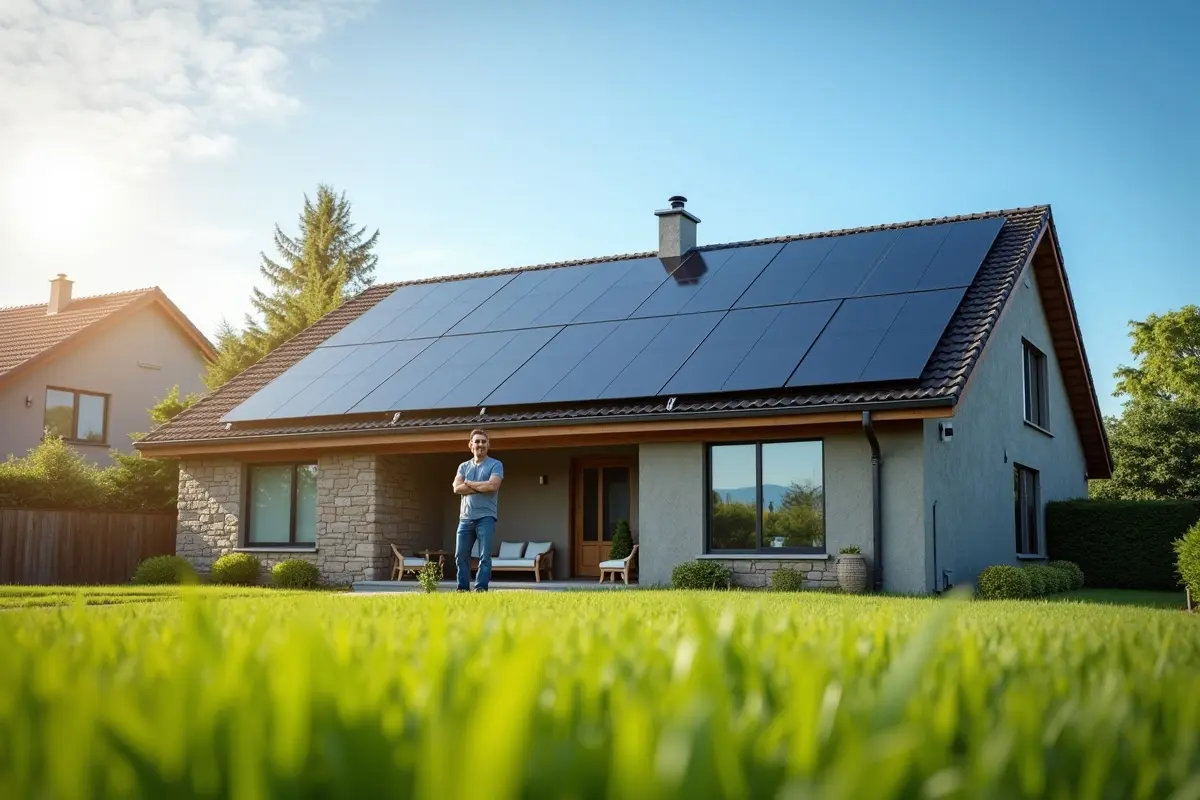Investing in solar panels is a game-changing step toward reducing energy costs and supporting environmental sustainability. For homeowners exploring options, understanding each stage of the solar adoption process—from incentives to installation—is crucial. This guide provides actionable insights for every stage, so whether you’re ready to go solar or simply researching, you’ll find practical advice. Discover the best solar panels for home use and learn what it takes to make the switch successfully.
Choosing solar means making informed decisions about your home’s suitability, understanding the credibility of installers, and staying updated about future technology. New solar shoppers and seasoned researchers alike can benefit from being thorough with step-by-step planning, staying compliant with local laws, and seizing available incentives. Taking the time to evaluate your options leads to smarter energy investments and long-term returns.
One major aspect of a successful installation is understanding the regulatory landscape and ensuring the design matches your specific energy needs. Homeowners also need to explore advances in solar technology, like integrated battery storage and aesthetic solutions that blend with modern homes.
Solar panels promise a greener future, can substantially increase property value, and offer protection from rising utility rates. Careful planning, engagement with certified professionals, and embracing new technologies will guide you toward a high-performing solar system tailored to your needs.
Financial Incentives and Tax Credits
The federal solar tax credit allows homeowners to deduct 30% of installation costs from their federal taxes through 2032, making solar more accessible and affordable. Many states sweeten the deal with their own rebates: for example, California and New Jersey offer incentives and net metering programs which further reduce the cost of going solar.
To maximize your savings, research local programs and utility rebates. Homeowners can use resources like the U.S. Department of Energy’s Homeowner’s Guide to Going Solar for an updated overview of what may be available.
It’s important to note that while these incentives can significantly lower the upfront costs, they may have application deadlines or eligibility criteria. Stay in touch with your local energy office or a qualified installer to ensure you meet all requirements and take full advantage of available programs.
Assessing Your Home’s Suitability
Roof Orientation and Slope
Assess how your roof faces the sun—south-facing roofs tend to receive peak sunlight, which maximizes output. Ideally, your roof slope should range from 15 to 40 degrees. East- and west-facing roofs can support solar, but may generate slightly less power. Shade is a crucial factor; trim overhanging branches and consider removing barriers that could cast shadows during peak sunlight hours.
Shading and Structural Integrity
Any persistent shading from trees, nearby structures, or roof features can decrease energy generation. During the assessment phase, installers often use software to analyze your roof’s sunlight exposure throughout the year. Additionally, ensure your roof is in good repair and structurally sound—a weak roof may require reinforcement before expensive panel installation.
Selecting a Certified Solar Installer
Finding a reputable installer is essential to the quality, safety, and longevity of your solar investment. Seek companies with North American Board of Certified Energy Practitioners (NABCEP) certification, a mark of professionalism and demonstrated knowledge.
Reputable solar installers will provide a thorough site assessment, explain equipment options, and help forecast your projected savings. Avoid working with installers who pressure you for an immediate commitment or hesitate to provide references. Comparing at least three detailed quotes ensures you understand your options and fosters a competitive price.
Navigating Local Regulations and Permits
Most communities have specific rules regarding solar panel placement, permitting, and grid interconnection. These may dictate allowable panel orientation, the type and visibility of mounting hardware, and even color restrictions for historical neighborhoods. Start by checking with your city’s building department or homeowner association (HOA) for guidelines and permit applications. Many trusted solar installers assist with permitting, but it’s the homeowner’s responsibility to review and understand local codes.
Maintenance and Care of Solar Panels
Well-maintained panels maintain peak output for decades. Dust, pollen, leaves, or bird droppings can reduce efficiency, so plan to inspect and clean your panels annually or semiannually with a soft brush and mild soapy water. Avoid abrasive sponges or harsh chemicals, as these can scratch or degrade your system.
Additionally, use your monitoring software or your installer’s app to track performance metrics. If you observe a noticeable drop in output, schedule a professional inspection to check for wiring issues or inverter problems before they escalate.
Integrating Energy Storage Solutions
Modern solar installations often include battery systems that store extra electricity for nighttime or during power outages. Lithium-ion batteries like the Tesla Powerwall or LG Chem offer scalable solutions for most homes.
Energy storage increases your independence and often qualifies for additional incentives or utility “smart grid” programs that pay you for supplying power during peak demand. Before investing in a battery, consider your energy goals, budget, and any local incentives for energy storage.
Future Trends in Residential Solar Technology
The solar industry continues to innovate, bringing greater efficiency and more appealing integration to home energy systems. Building-integrated photovoltaics (BIPV) blend solar collection into roofing, siding, and windows, reducing visual impact and harmonizing with modern architectural styles.
The rapid evolution of solar cell materials, such as perovskites, is expected to drive costs down and efficiencies up in the coming years, making high-performance solar even more attainable for average homeowners. Staying informed about these shifts ensures you’ll benefit from both the latest incentives and technical milestones.
Conclusion
Transitioning to solar is a long-term choice delivering environmental and financial rewards—while providing resilience against rising energy costs. By leveraging tax credits, vetting your home’s readiness, working with accredited installers, adhering to local regulations, planning for maintenance, and considering future-ready technologies, you’ll maximize your investment and make a positive impact on your home and community.




